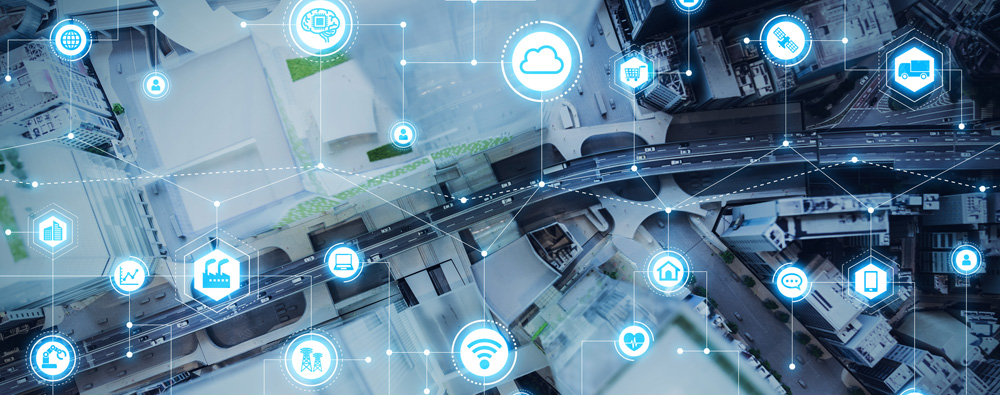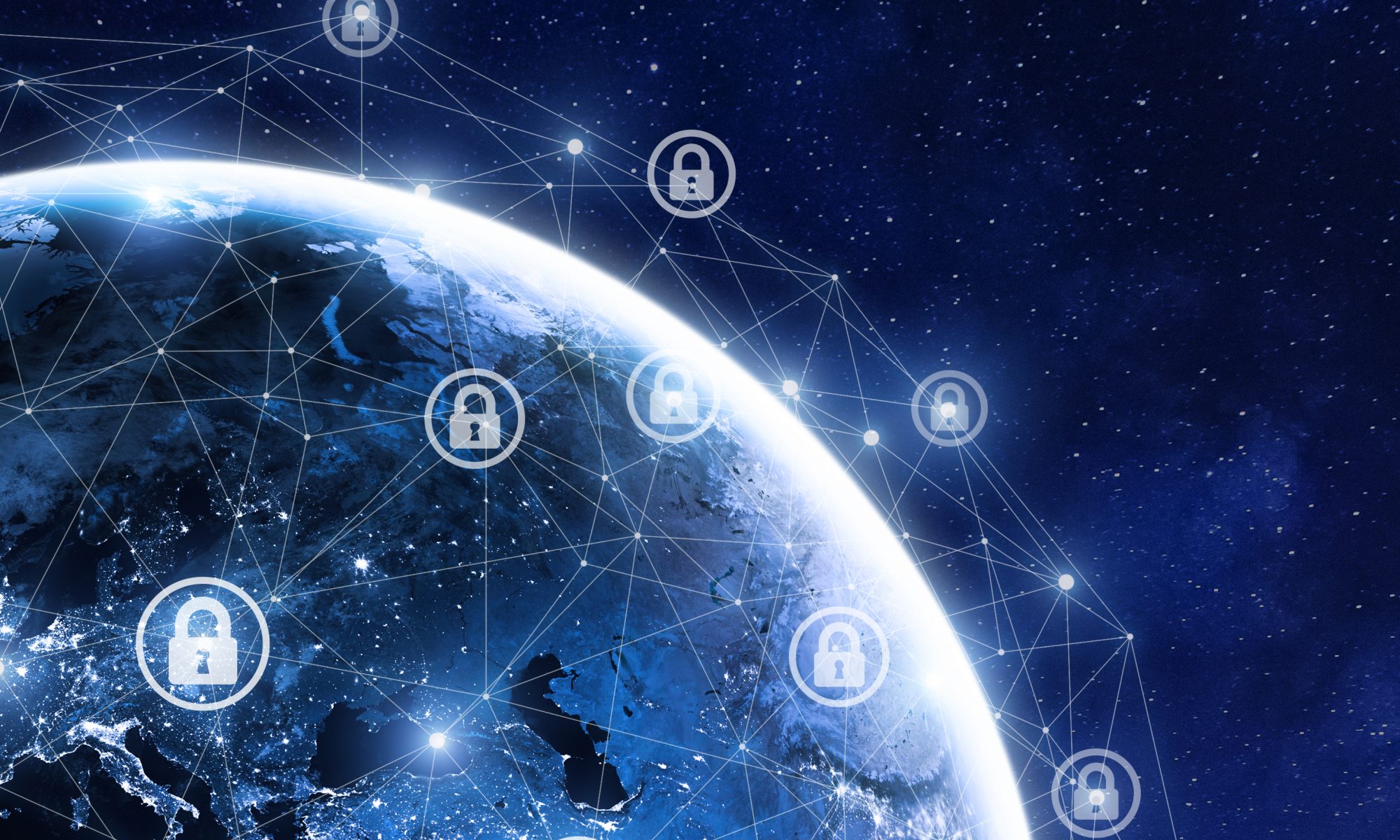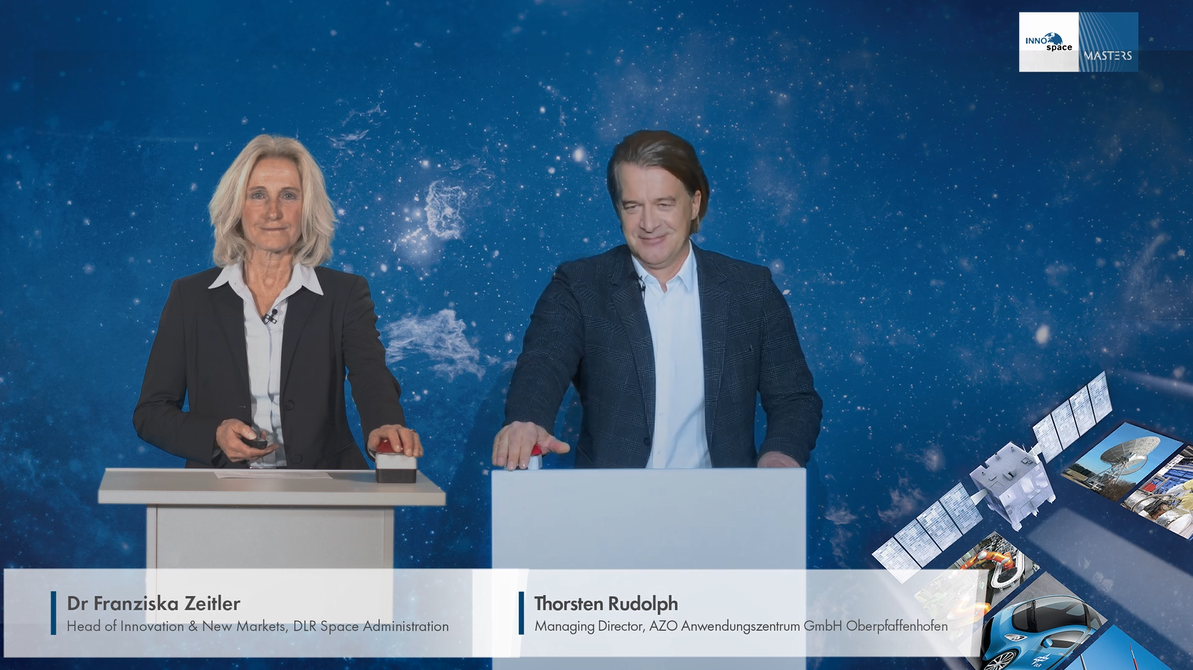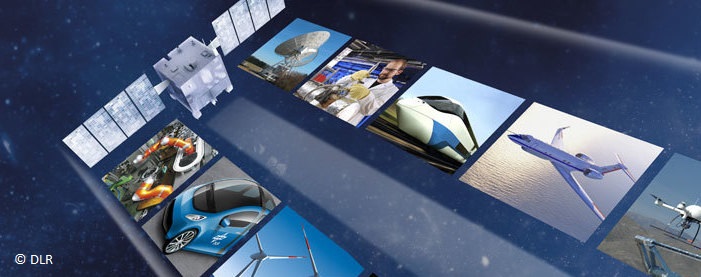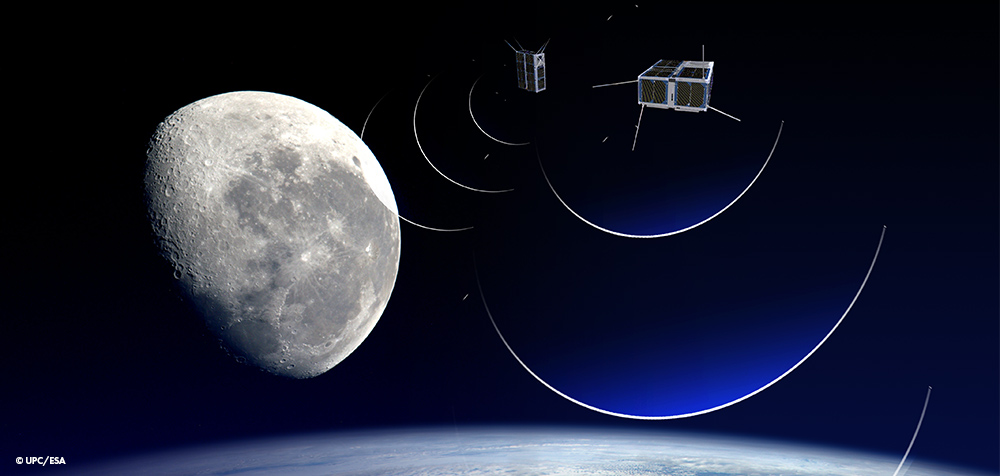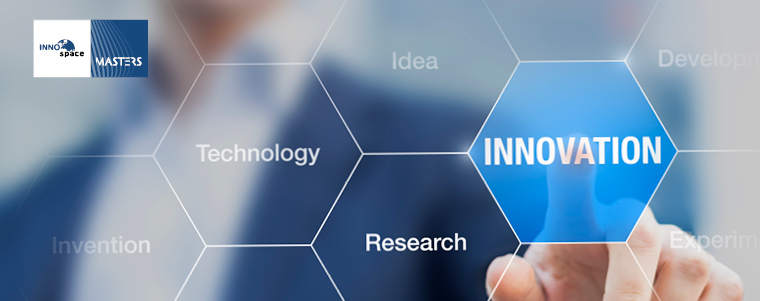
- 27. January 2021
Collecting and Transmitting Data via Satellites to Ensure a Robust Railway Network
Spanning some 34,000 kilometres in total, Europe’s largest railway network is operated, maintained, and improved by DB Netz AG. This company is increasingly relying on sensors, artificial intelligence, machine learning, and satellite data to offer passengers even more reliability on their journeys. Smart technology of this kind is making it possible to identify and address potential infrastructure disruptions before they arise. Here, the overarching aim is to make widespread use of digital technology with an eye towards status-oriented diagnosis and even more robust railways. As part of the INNOspace Masters competition, the DB Netz AG Challenge presents awards to innovative solutions that facilitate predictive maintenance and disruption-free railway operations based on satellite services and expertise from the realm of spaceflight. Ideas for the next edition of INNOspace Masters can be submitted until 5 February 2021. Enter now!
Infrastructure data in real time
One key aspect of DB Netz AG’s work involves keeping an eye on the status of its railway network, ideally in real time. Railway tracks that include bridges and tunnels, overhead contact lines, control and safety equipment – all of this requires constant monitoring to ensure that disruptions are prevented and necessary measures are initiated promptly.
One way to meet this challenge is to attach sensors to trains that run on regular schedules. Detecting track damage, for example, requires data that is accurate down to the millimetre. Collecting it, however, is even more complex than it seems at first glance: Trains travel at speeds up to 300 km/h, which leaves very little time to gather this high-precision data. At the same time, the sensors involved are exposed to powerful forces like acceleration, braking force, vibration, and centrifugal force (when passing through curves). They also have to be able to withstand all kinds of weather.
The space industry also places extreme demands on sensors in terms of their precision, robustness, and durability. The INNOspace Masters competition promotes the transfer of such technology and expertise from the realm of spaceflight to the railway sector. One example of its success in this regard is the Silent Running project, which took second place in the INNOspace Masters DLR Challenge in 2018. The metamaterials it has developed to help reduce vibration in launch vehicles can also be used in the automotive, aviation, and railway industries. They also represent an important step forward in sensor optimisation. Meanwhile, there are still plenty of challenges waiting for the right people to take them on.
Fast, secure data transmission
Another fundamental factor in DB Netz AG’s railway operations has to do with the transmission and analysis of sensor data. In order to predict when individual components or systems might fail and plan maintenance and repairs accordingly, this data needs to be available as quickly as possible. Ideally, DB Netz AG wants to have large amounts of information sent to its systems in real time. Due to long transmission times or a lack of radio connectivity, however, data can often only be sent to its central system once a journey is complete. As a result, there are sometimes considerable delays in analysis, which in turn holds up corresponding maintenance activities.
This is another area where DB Netz AG is counting on the huge potential for technology transfer from the space sector. After all, tremendous amounts of data also need to be transmitted as quickly as possible from satellites in orbit to stations on the ground. The following innovations demonstrate how solution approaches from space are being applied here on Earth.
The DLR Space Administration has supported the development of the European Data Relay System (EDRS) with funds from the German Federal Ministry for Economic Affairs and Energy. The EDRS represents the first commercial application of optical satellite communication in space. Through laser communication terminals (LCTs), this information highway makes it possible to transmit large amounts of data in near-real time.
For another example, consider Intelligence on Wheels (IoW), which was founded in 2012 as a spin-off of the German Aerospace Center with support from the ESA Business Incubation Centre Bavaria. Its innovative collision prevention system for trains (RCAS) utilises highly precise satellite data to determine exactly where trains are on tracks and how fast they are travelling, all in real time.
As part of INNOspace Masters, the DB Netz AG Challenge is continuing its search for innovations from the space industry that can make tomorrow’s railway infrastructure even more robust, efficient, and reliable. This year’s top three entries will each receive an extensive prize package. Ideas can be submitted until 5 February 2021. Enter now!

